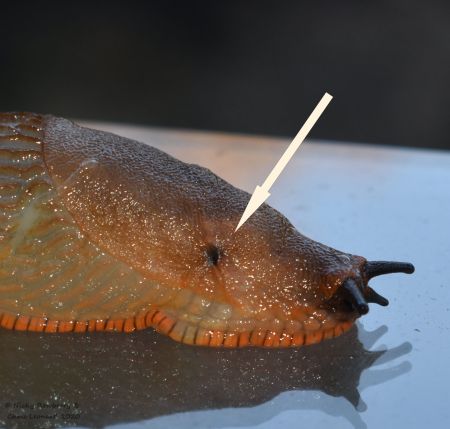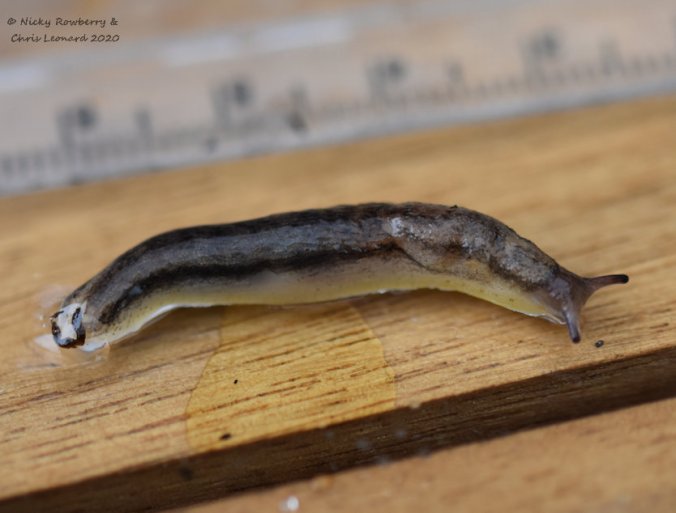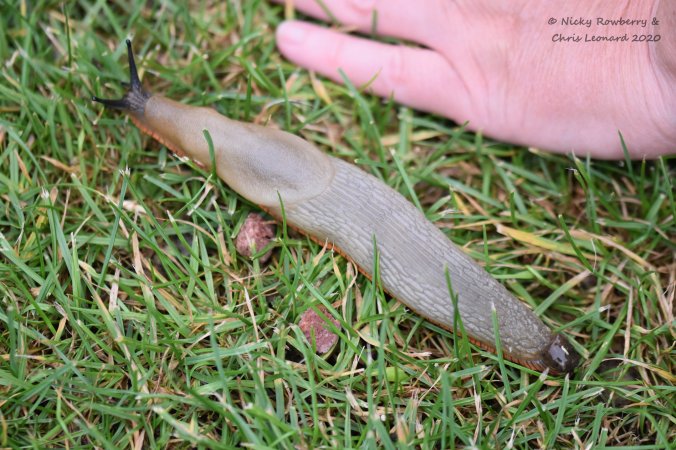Despite being stuck at home like many people, for much of this year, I don’t seem to have blogged as much as I would have liked. It certainly wasn’t for lack of interest in the garden – having spent an inordinate amount of time sitting out, there was plenty to see. Perhaps there was too much, or perhaps I just couldn’t face being cooped up inside to write. Whatever the reason, I’ve ended up with a lot of interesting (to me at least) snippets, that never saw the light of day. So here’s a miscellany of wildlife moments from the garden this year – they all cheered me up and they deserve their moment!
Most of this will be insects, but there are a trio of mammals making the cut. Hedgehogs of course featured regularly in the garden. Freda our 3-legged hedgehog from the previous year not only made it through the winter, but produced at least one hoglet. Here she is looking like many mums – slightly harassed by her offspring.
Bats (most likely Common Pipistrelles) have always used our garden as a hunting ground in the summer months. A weed-filled garden tends also to be an insect-filled garden, so there are plenty of moths and other food for them. It may be wishful thinking on my part, but the bats do seem to be coming more frequently now we have the new pond. The pond is surely generating extra insect activity, which hopefully means more bats. I’ve tried with very limited success to film them – this was the best of a shoddy selection of shaky videos. I reckon there are at least 3 bats visible towards the end of the clip.
Third mammal is this mouse at the bird feeder, for no other reason than it was so cute.
So on to the insects. I was really chuffed to spot a Dotted Bee-fly again this year, amongst all the regular bee-flies. Both species seemed to favour warm stones around the pond.
Hoverflies were abundant in the garden and as usual I failed completely to get to grips with identifying them all. There were lots of different shapes and colours though, including some of the delightful bee mimic ones.
One I did manage to identify though was the Hornet Mimic Hoverfly (Volucella zonaria) – one of the biggest British species. They really were huge compared to the other hoverflies.
A new species to me and in fact a new group was this Potter Wasp – so called because some species construct little mud pots for nests.
Continuing on the waspy theme, here’s one of the gorgeous ruby-tailed wasp species. I tend to have mixed feelings towards these – they are of course stunningly beautiful, but they do parasitize mason bee nests and I feel very protective of my little mason bees. But live and let live and it’s nice to have diversity in the garden.
The wasps aren’t the only parasitic insects in the garden. I discovered this new addition to our garden bee fauna this year – a Sharp-tailed bee Coelioxys sp. These ones make use of leaf-cutter bee nests.
Talking of leafcutter bees, I had meant to do a whole blog post on them. I’ve got a lot of photos and a lot of videos – so many in fact I think it became too daunting to sort through. So a full leafcutter post will have to wait until next year. In the meantime here’s a snippet.
We’ve had a few interesting beetles this year too. This one I spotted on the garage wall, while out checking the moth trap one night. For a split second I thought I’d got a Stag Beetle, then reality set in and I realised it was a Lesser Stag Beetle. Still a first for the garden, so very pleased to add it to our list.
The pond of course attracted lots of water beetles. This huge Great Diving Beetle misjudged his landing though and ended up in the hedgehog’s water bowl.
Also misjudging his landing was this Dung Beetle (Onthophagus coenobita) which ended up on a bit of frogbit in the pond.
Moths I’ve covered fairly extensively in other blog posts, but possibly my favourite odd moment this year was watching a male Black Arches moth flare it’s genitalia at me! It was perched on the edge of a pot and while I tried to photograph it, it started this weird behaviour. Don’t know whether it was trying to warn me off, or perhaps entice me (should I be flattered?), but it was certainly very odd. I sent the video clip to some moth experts and they weren’t sure why it was doing it either.
So that’s it really – a quick round-up of some of the wonderful wildlife I was lucky enough to see in our garden, but didn’t manage to blog about before. I feel very lucky to have had a garden to enjoy in 2020; it really has made things a lot easier to deal with when you’re surrounded by so much wildlife.
I’ll do a summary of everything else we’ve seen this year in the next blog post, with hopes and dreams for next year too. Happy New Year everyone. xx

























